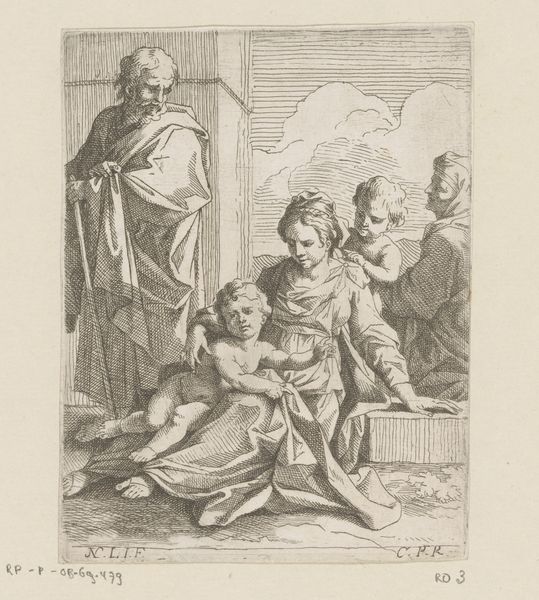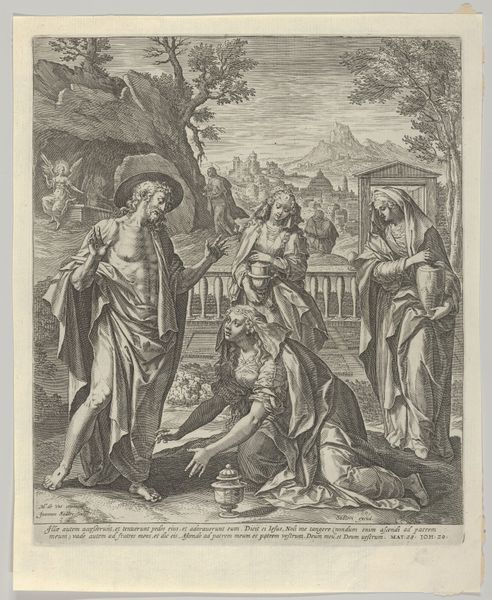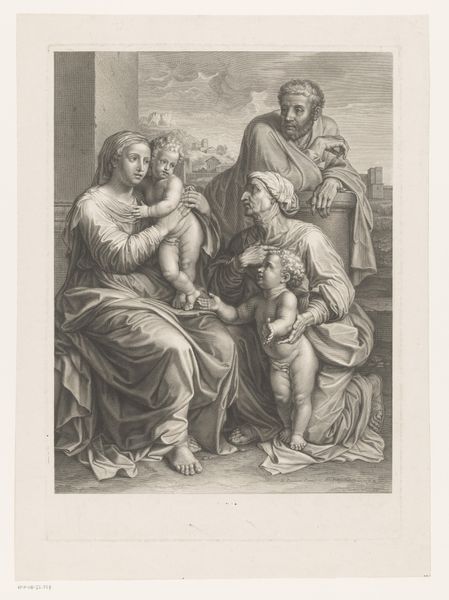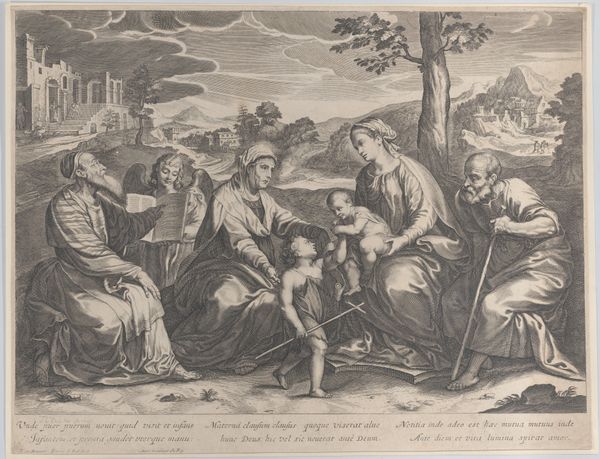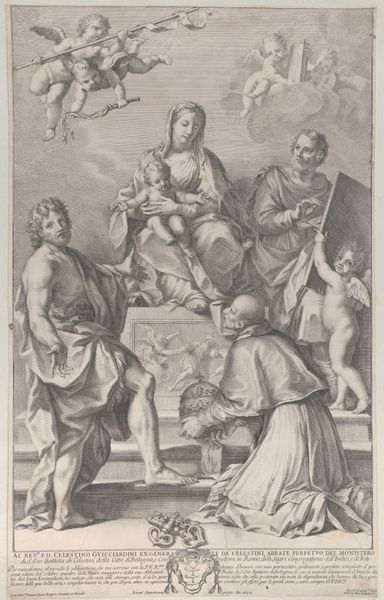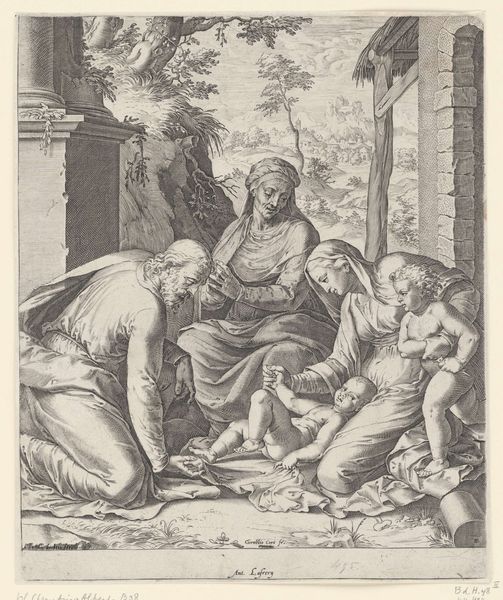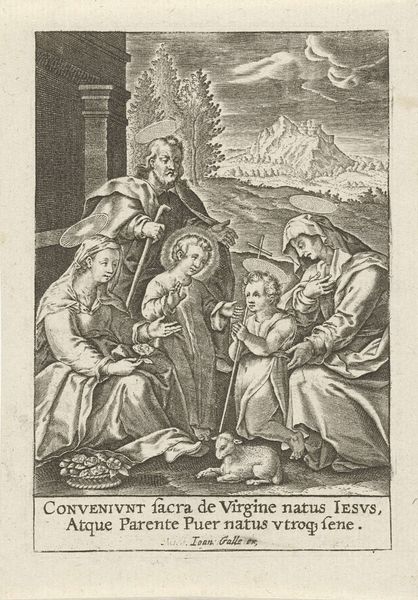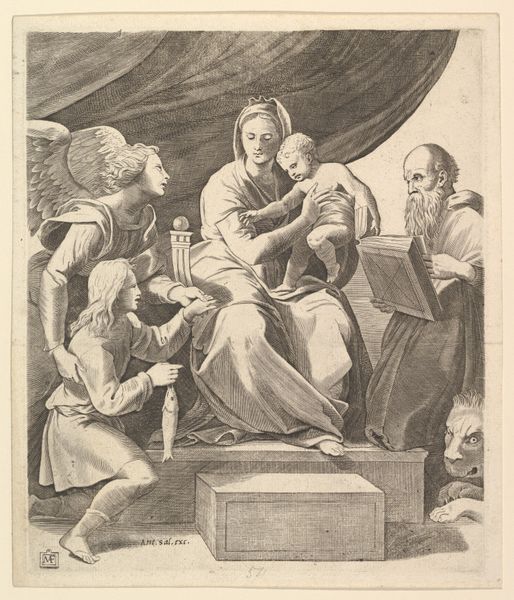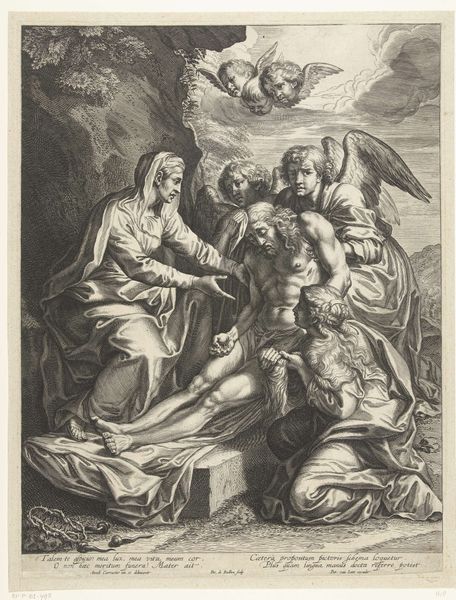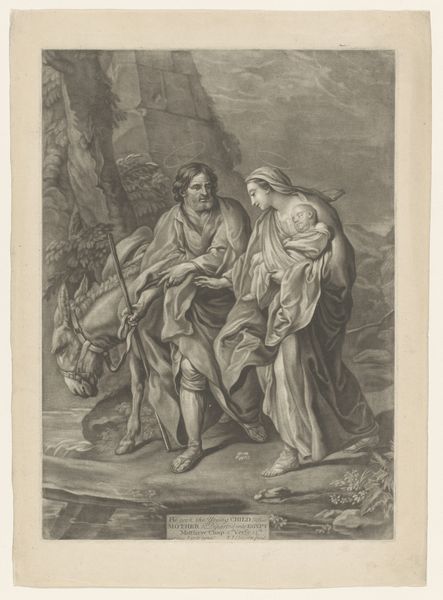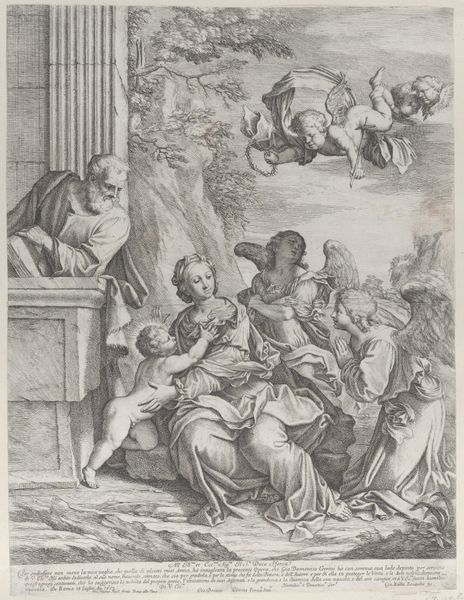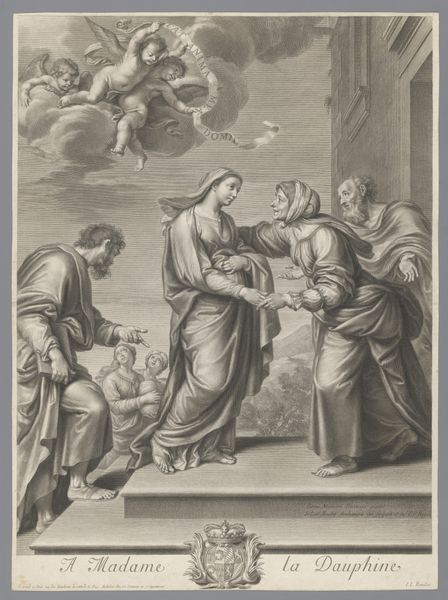
print, engraving
#
baroque
# print
#
old engraving style
#
figuration
#
history-painting
#
engraving
Dimensions: height 506 mm, width 365 mm
Copyright: Rijks Museum: Open Domain
Curator: Ah, here we have “The Holy Family with Elizabeth and John” created around 1670 by Jean Pesne, currently held at the Rijksmuseum. It’s an engraving rendered in that distinctive Baroque style. Editor: My first impression is one of subdued grandeur. The composition feels so staged, so purposefully arranged to convey a certain…solemnity? Curator: Absolutely, staging is key to understanding this image. Think about the characters portrayed. We see the Holy Family alongside Elizabeth and young John the Baptist, a classic grouping meant to convey piety and lineage. Notice the careful arrangement; it isn’t merely a family portrait but a carefully constructed statement. Editor: And it places this very intimate domestic scene within this grand, almost theatrical landscape. The architectural elements in the background seem to emphasize a contrast, between the domestic sphere and the weight of religious history and institution. It raises the questions about who had the privilege to such domestic tranquility within the baroque society? Curator: Precisely. That landscape, with its almost classical ruins and orderly townscape, would be deliberate. This is a vision of the Holy Family existing within a divinely ordered world, mirroring earthly order and prosperity, reminding viewers of divine influence and their potential spiritual wealth. Note the visual language. Joseph’s active prayer posture symbolizes obedience. The infant's embrace is all about prophecy and continuity. Editor: It is difficult for me not to think about the history and the power that such iconographies were conveying at the time. To what extent did this "ordered world" perpetuate social inequalities, for whom? Did it mask the exploitation and oppressions necessary to sustain this prosperity? And it forces one to consider which communities didn't have the opportunity to enjoy safety, intimacy and tranquility due to religious conflict, social inequality and even colonization? Curator: A valid point; images are never neutral. They reflect, and can reinforce, the power structures of their time. But consider also how this image would function for those within the faith; perhaps providing solace, inspiration, and a visual connection to the divine promise despite earthly troubles. Editor: That's a powerful reading as well, understanding the image's potential to provide spiritual succor. The artist gives space for hope, in this chaotic political period. It invites us to meditate on complex entanglements. Curator: Exactly, so while on one hand the artwork shows baroque features like overstaging and theatrics, we should remember its appeal to the vulnerable.
Comments
No comments
Be the first to comment and join the conversation on the ultimate creative platform.
